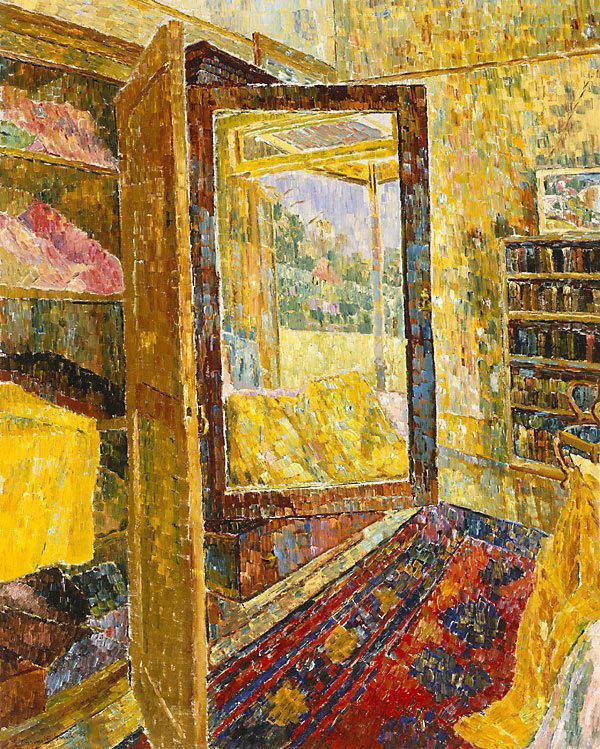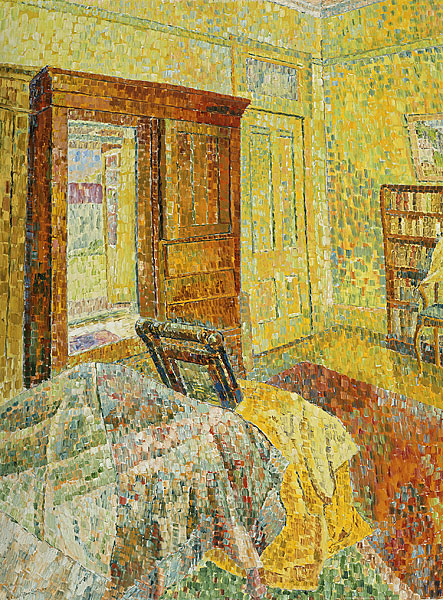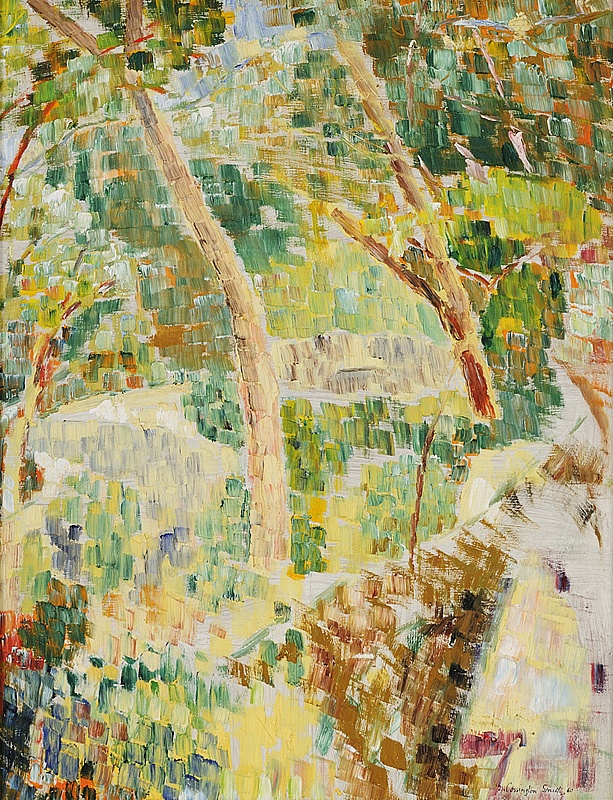‘My chief interest, I think, has always been colour, but not flat crude colour, it must be colour within colour, it has to shine; light must be in it… The room is in my own home here, and the sunlight did not come in a definite way but the whole room seemed to be full of light, which is what I want to do more than the actual sunlight. I feel that even the shadows are subdued light and they must have light in them as well.’
Grace Cossington Smith (1892–1984) was one of the most innovative Australian artists of the twentieth century. An early modernist, her fascination with light and colour and her interest in what she saw around her developed throughout the many phases of her work, culminating in the luminous interiors she painted in the 1950s and 1960s. Members of her family’s comfortable suburban milieu might have perceived her as a ladylike amateur; her fellow modernist painters, especially Roland Wakelin and Roy de Maistre, who were also students of Antonio Dattilo-Rubbo in Sydney, greatly respected her art. Dattilo-Rubbo was a passionate enthusiast of modernism and post-impressionism, introducing his students to the work of Cezanne, Gauguin and Van Gogh.
 I saw her Interior with Wardrobe Mirror, 1955, at the Art Gallery of NSW a couple of years ago and was struck by the vibrant colours and large rectangular flat brushstrokes that gave the work a mosaic quality. The juxaposition of pure colour is absolutely stunning in real life. I admire the way she uses colour fearlessly and the strong brushstrokes that seem to ‘dance’ on the canvas.
I saw her Interior with Wardrobe Mirror, 1955, at the Art Gallery of NSW a couple of years ago and was struck by the vibrant colours and large rectangular flat brushstrokes that gave the work a mosaic quality. The juxaposition of pure colour is absolutely stunning in real life. I admire the way she uses colour fearlessly and the strong brushstrokes that seem to ‘dance’ on the canvas.
I also love her landscapes, which are reminiscent of Cezanne, who she claimed was one of her most important influences.
Bush in the Nature Reserve, 1950
In the 1940s art museums throughout Australia began collecting Cossington Smith’s work but she did not become widely known until the 1960s. In 1973 she was appointed O.B.E.; that year a museum retrospective exhibition of her work was organised by the Art Gallery of New South Wales and toured Australia. She did not paint after that. Slow recognition may have been due to her quiet temperament, and retiring life; the profound simplicity and directness of her work also gave it an air of naivety to some academic fellow artists. She did, however, let slip in 1973 her awareness that wide recognition at 81 was rather late, and would have been welcomed earlier.
Bush Untouched, 1960. This late work seems almost unfinished, and has become more abstract. You can see the structure of the straight brushstrokes that make up the composition.
Her art was very pure. She painted only when the spirit moved her and then decisively and rapidly; the painting — ideas as well as visual images — had already been shaped in her mind. In 1967 she said simply ‘I have always wanted, and my aim had always been, to express form in colour — colour within colour, vibrant with light.
All form — landscape, interiors, still life, flowers, animals, people — has an inarticulate grace and beauty; painting to me is expressing this form in colour, colour vibrant with light, but containing this other, silent quality which is unconscious, and belongs to all things created.’



